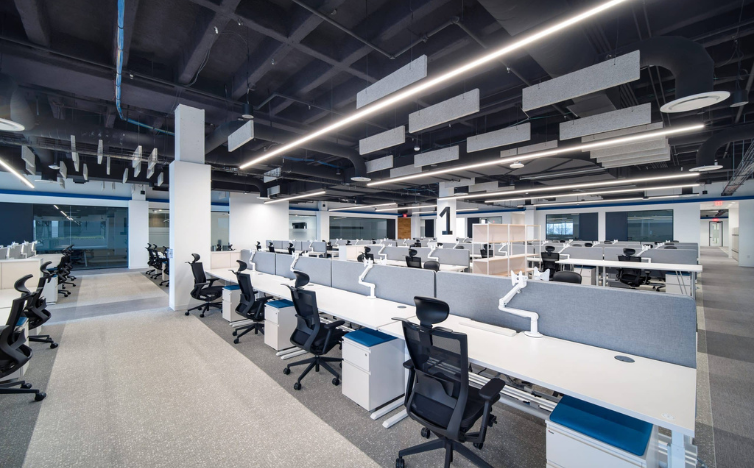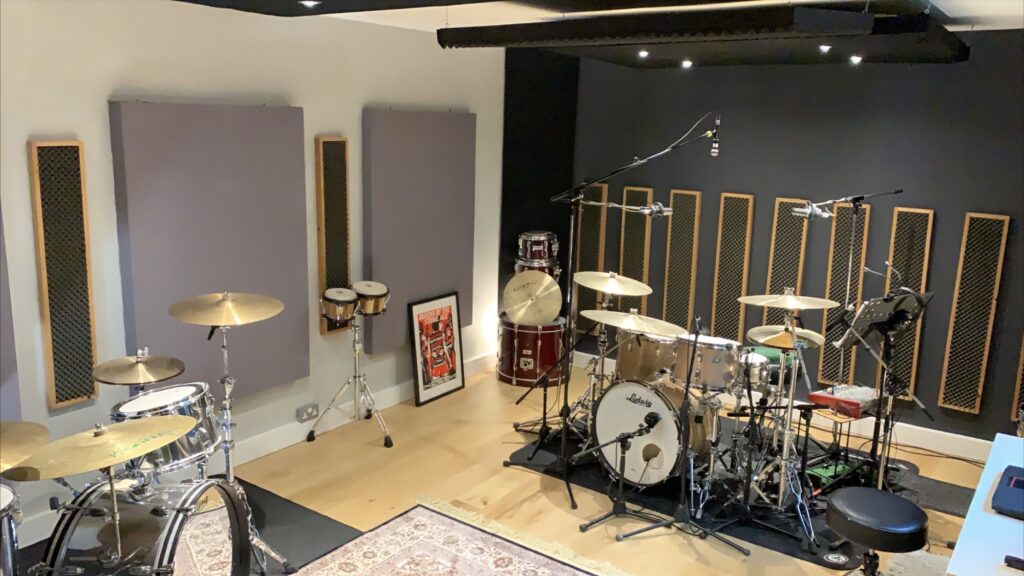As open office spaces continue to be a popular choice for workplaces, one of the primary challenges remains controlling noise levels. Custom acoustic solutions can help reduce distractions, improve productivity, and create a more pleasant environment for employees. This guide explores the benefits, types, and best practices for open office spaces with custom acoustic soulutions.
Why Acoustics Matter in Open Offices
Open offices promote collaboration, transparency, and flexibility, yet they often lead to increased noise distractions. Without proper acoustic treatment, conversations, phone calls, and office equipment can create a noisy environment that impacts concentration. Research shows that noise in open offices is a leading cause of employee stress and decreased productivity, making sound management essential for a functional workspace.
Benefits of Custom Acoustic Solutions
Custom acoustic solutions offer tailored approaches that address the unique sound challenges in open office layouts. Here’s how they benefit the office environment:

- Noise Reduction: Acoustic treatments help reduce the impact of ambient noise, allowing employees to focus more effectively.
- Privacy Enhancement: Custom solutions can create private zones within open areas, where employees feel comfortable discussing sensitive information.
- Increased Productivity: Reduced noise levels contribute to better concentration and efficiency, helping employees work more productively.
- Improved Well-being: Quieter environments can decrease stress and fatigue, contributing to overall employee well-being.
See Also: Enhance Your Room Acoustics with Custom Acoustic Solutions
Types of Acoustic Solutions for Open Office Spaces
- Acoustic Panels
Acoustic panels are an effective way to absorb sound. Available in a range of colors and materials, they can be mounted on walls or hung from ceilings. Custom-designed panels can blend seamlessly with office decor while targeting specific noise frequencies to reduce reverberation. - Acoustic Dividers and Partitions
Dividers and partitions are practical for creating private areas within open spaces. These can be designed with acoustic materials to absorb sound and visually section off different work zones, enhancing both noise control and office layout flexibility. - Ceiling Baffles and Clouds
Hanging baffles or acoustic clouds from the ceiling is a popular method for open offices with high ceilings. These treatments help reduce sound reflection and reverberation, especially in large spaces. Custom shapes and arrangements allow you to target specific noise issues unique to your office layout. - Sound Masking Systems
Sound masking uses low-level background noise to cover up distractions. It can be tailored for different zones in the office, offering a more controlled noise environment without dampening important sounds entirely. - Furniture with Built-in Acoustics
Acoustic office furniture, such as cubicles with sound-absorbing materials or pods, provides private zones within open areas. Furniture-integrated acoustics help reduce noise within collaborative spaces without sacrificing flexibility.
Key Considerations for Custom Acoustic Design
When planning custom acoustic solutions, it’s essential to consider both the needs of the employees and the specific layout of the office space:
- Noise Sources: Identify the main noise sources, such as phone zones, printer areas, and collaborative spaces, to focus treatments where they are most needed.
- Employee Needs: Consider the nature of your team’s work. For example, departments requiring high focus may benefit from more acoustic treatments than collaborative teams.
- Design and Aesthetics: Custom solutions allow you to integrate acoustics without compromising office style. Acoustic elements can be designed to complement branding and decor.
- Budget Constraints: Acoustic solutions vary in cost, so consider solutions that provide the best noise reduction benefits within your budget.
Implementing Custom Acoustic Solutions
Integrating acoustic solutions into an open office involves planning and installation. Here’s a basic roadmap:
- Consultation and Assessment
Begin by consulting with acoustic experts who can assess the space and recommend tailored solutions based on your office’s layout and noise profile. - Product Selection
Choose products and materials that suit both your acoustic needs and office aesthetics. Consider panels, baffles, sound masking, and furniture as part of a cohesive solution. - Installation and Optimization
Professional installation ensures that acoustic treatments are positioned and secured correctly. Test the acoustics post-installation to adjust as needed for maximum effectiveness. - Employee Feedback and Adjustment
Gather feedback from employees on noise levels and comfort, making any necessary adjustments to ensure optimal performance.
Maintaining Acoustic Solutions
To maintain an acoustically optimized environment, it’s essential to periodically evaluate and refresh your solutions. As offices change, with new layouts or teams added, acoustic needs may evolve. Regularly assessing acoustic effectiveness ensures that your open office continues to offer a productive and pleasant work environment.
Call us: Contact Waseem Technical Soundproofing Expert in Dubai For Soundproofing: +971 50 209 7517
Conclusion
Custom acoustic solutions are an invaluable asset to open office spaces, helping to reduce noise, enhance privacy, and foster productivity. By assessing specific office needs and implementing targeted solutions, businesses can create an environment where employees can thrive, free from the distractions of an open layout. With thoughtful planning and maintenance, custom acoustics contribute to a balanced, productive workplace culture.




